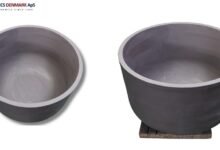Beyond Guards and Sensors: What Professional Machine Safety Audits Reveal

Most manufacturing facilities believe their safety measures are adequate because they follow basic OSHA guidelines and conduct routine maintenance. Yet workplace accidents continue to happen at alarming rates, often revealing critical gaps that standard safety protocols miss entirely.
Professional machine safety services go far beyond checking that guards are in place and sensors are functioning properly. These comprehensive evaluations examine control logic, analyze human-machine interactions, and identify vulnerabilities that could lead to catastrophic failures. The difference between basic compliance checks and thorough safety audits often determines whether workers go home safely each day.
The Hidden Dangers Lurking in Your Equipment
Control Logic Vulnerabilities: Modern machinery relies heavily on programmable logic controllers and safety systems that can develop subtle flaws over time. These systems might appear to function normally during routine operations but fail catastrophically when unexpected conditions arise. A single programming error or component degradation can bypass multiple safety layers simultaneously.
Personal Protective Equipment Gaps: Many facilities assume that providing hard hats and safety glasses covers their PPE requirements. Professional audits frequently uncover situations where workers need specialized protection for specific tasks or environments. The wrong type of gloves, inadequate respiratory protection, or missing lockout devices create unnecessary risks that become obvious only through expert analysis.
Environmental Factor Oversight: Temperature fluctuations, humidity levels, vibration patterns, and electrical interference can compromise safety systems in ways that aren’t immediately apparent. These environmental stressors accumulate over time, gradually degrading the reliability of protective measures until they fail when needed most.
What Expert Audits Uncover That Standard Maintenance Misses
Systematic Risk Assessment: Professional safety auditors approach equipment with fresh eyes and extensive experience across multiple industries. They identify interaction patterns between different systems that in-house teams might overlook due to familiarity with existing processes. This outside perspective reveals blind spots that develop naturally when the same people maintain equipment for years.
Documentation Review and Gap Analysis: Expert auditors examine maintenance records, training documentation, and safety procedures to identify discrepancies between written policies and actual practices. They often discover that informal shortcuts have replaced established safety protocols, creating dangerous precedents that gradually become accepted practice.
Predictive Safety Modeling: Advanced safety assessments include scenario planning that tests how systems respond under various failure conditions. This proactive approach identifies potential cascade failures before they occur, allowing facilities to implement preventive measures rather than reactive repairs after accidents happen.
The Business Case for Professional Safety Assessments
Insurance and Liability Protection: Companies that invest in professional safety audits demonstrate due diligence that can significantly impact insurance premiums and legal liability. When accidents do occur, having documentation of professional safety assessments shows commitment to worker protection that courts and insurance companies recognize.
Operational Efficiency Gains: Safety improvements often increase productivity by reducing equipment downtime and eliminating workflow interruptions. Properly functioning safety systems allow operators to work more confidently and efficiently, knowing that protective measures are reliable and won’t create false alarms that disrupt production schedules.
The following benefits justify the investment in professional safety expertise:
- Reduced worker compensation claims through proactive hazard identification and elimination.
- Lower insurance premiums resulting from documented safety improvement initiatives and risk reduction measures.
- Increased equipment longevity through proper maintenance protocols that protect both machinery and personnel.
- Enhanced regulatory compliance that prevents costly fines and potential facility shutdowns.
- Improved employee morale and retention rates in environments where workers feel genuinely protected.
Why Internal Teams Can’t Replace Professional Expertise
Specialized Knowledge Requirements: Machine safety experts possess certifications and experience across multiple industries that internal maintenance teams typically don’t have. They understand how similar equipment behaves in different environments and can predict failure modes that might never occur in a single facility but are common industry-wide.
Regulatory Compliance Expertise: Safety regulations change frequently and vary between industries and jurisdictions. Professional auditors stay current with evolving standards and can ensure that facilities meet not just current requirements but anticipated future changes that could affect compliance status.
Objective Assessment Capability: Internal teams often develop emotional attachments to equipment they’ve maintained for years and may resist acknowledging problems with systems they’re responsible for. External experts provide unbiased evaluations that aren’t influenced by internal politics or budget constraints that might discourage honest reporting of safety deficiencies.
Read Also: Home Interior Design Hong Kong: Creating Spaces That Reflect Your Lifestyle
Conclusion
Professional machine safety audits reveal critical vulnerabilities that standard maintenance checks routinely miss, protecting both workers and business operations from preventable disasters. The investment in expert safety assessments pays dividends through reduced liability, lower insurance costs, and improved operational efficiency that more than justifies the initial expense. Don’t wait for an accident to expose the gaps in your current safety program—schedule a comprehensive professional audit today to identify and address potential hazards before they become costly incidents.






